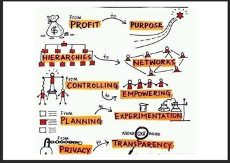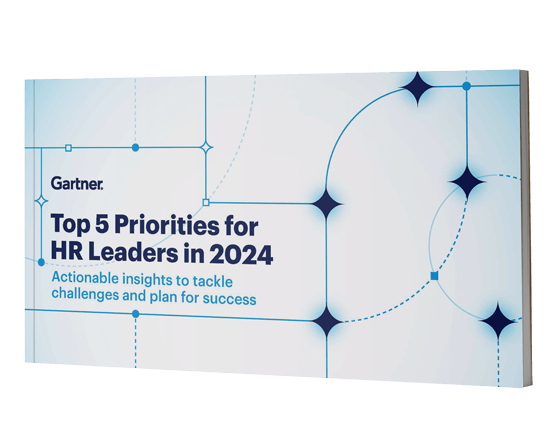What is the city but its people?
Matt Bennion, Co-Founder of The Cause Effect, and Nathan Ott, Chief Polisher at The GC Index talk about the importance of culture when trying to create sustainable Smart Cities – where the objective is to improve quality of life for business and residents alike and win the race to be the most sustainable, productive and therefore attractive city.
Technological disruption, changing generational behaviours, expectations and preferences, shifting markets and rising costs are driving organisations to seek new ways of doing business in the quest to secure dedicated and motivated people who build truly long-term value and deliver enduring growth.
Many enlightened businesses have recognised the changing expectations of their workforce and the success of smaller, more agile new market entrants and begun a process of transforming traditional business models. This transformation is a fundamental mindset shift, away from management by traditional metrics through convoluted structures with decision making and idea generation vested in a concentrated and often invisible few. Current thinking is instead towards the development of inspiring cultures, anchored in a higher purpose or cause and brought about through collaboration, co-creation and dissemination of authority to the originators of shared value. It is after all culture that makes business sustainable.

*Credit author and illustrator Tanmay Vora
In business, the game is to create sustainable shareholder value. In SMART cities the objective is to improve quality of life for business and residents alike and win the race to be the most sustainable, productive and therefore attractive city. Again, it is culture that will make SMART cities sustainable, rational environmental and economic factors wont.
As Shakespeare once wrote “What is the city but the people?”
The Sino-Singapore Guangzhou Knowledge City, a SMART city soon to be the size of Pittsburgh struggles to attract people despite its huge investment in infrastructure, technology, healthcare and recreation because the investment in culture has been lacking.
Creating a true sense of purpose and belonging will become ever more important to business and cities as the impact on work of the Fourth Industrial Revolution becomes felt and the fear that automation will displace and replace humans in the workplace undermines basic needs and intrinsic motivations, which if unchecked offers the potential for further declines in mental wellbeing and the possibility of social unrest.
In the new world therefore, business and cities share the common objectives of connecting and inspiring, of offering jobs and the opportunity to dream, of alleviating differences and of being inclusive. Above all they both have the objective of empowering people to realise a meaningful cause.
Get the culture right
The economic case for this approach is strong. Evidence suggests that Employees who feel they are working towards a meaningful cause are up to 30% more productive and in a study* of 50,000 global brands, the top 50 financially performing brands pursued purpose ahead of profit, creating increased shared value for all stakeholders. Whilst this ‘greater cause to greater productivity’ is an attractive destination for many organisations but it is not always easy to achieve with the demands of day to day economic pressures. A fundamental starting point for all organisations is to quickly align individual and collective to business objectives. This is where an Organimetric comes in.
Using The GC Index to align individuals and organisations
In business and municipalities alike, Organimetrics (Organisation-metrics) such as The GC Index® offers organisations the opportunity to better understand the approach people, their teams and their partners make towards business and municipality goals and objectives. The first step in building the trust that underpins empowerment and inclusivity.
It offers the opportunity for colleagues and partners to understand each other and for organisations to use this understanding to allow people to play to their strengths, maximise their contribution and in turn feel potent. This collectively releases the emotional effort and goodwill that comes from an energised workforce that is connected to a truly meaningful cause. It can be used to identify and maximise the impact of those people who can change the game, either by mapping, reinventing, building, orchestrating or improving the future.
This methodology is being applied in SMART Cities via the InnoEnergy Master’s in Energy for SMART Cities Programme where Master Students from all over the world are taken through a 12 month impact coaching programme. The programme runs parallel with their academic studies and is focussed on how these Masters Students, the future generation of SMART Cities workforce, will make their best impact and contribution to a role, team and/or organisation. They are learning how to best apply and value individual and collective contributions from the outset which helps them embed a culture of collective impact within their approach to work.
Enabling organisations to profile the impact that they need to have, specific to their business needs, will support business objectives, whether that be growth, innovation or performance related. It means organisations are able to recruit and develop people and teams with the proclivities to make the desired impact and maximise their contribution to organisational objectives.
We could consider a Municipality, who may seek identify clearly ‘what’ needs to be done to win the race to be the most sustainable, productive and therefore attractive city and then include people in shaping the future and engaging ‘hearts and minds’ in a way that leads to action. They may use The GC Index to build the ‘Strategist’ ‘Playmaker’ organisation – a contemporary organisation that focuses on what needs to be done, involving people in shaping the future.
Similarly, we could look at a scale up bio sciences business, attracted to the city by the presence of other eco-system partners, the liveability of the city and financial incentives. This organisation is looking to turn creative ideas into reality and get things done to a better standard than its competitors. The bio-science business may look to use The GC Index® to build a ‘Game Changer’ ‘Polisher’ culture – a focus on invention and turning ideas into reality.
Finally, let’s consider a utility or transportation company looking to take advantage of new technologies and meet the many competing needs of a vibrant and growing cities businesses’ and residents. Here the need is for practical problem solving, finding better ways of doing things and improving processes and procedures which lends itself to a ‘Game Changer’ ‘Implementer’ based culture – creative practical problem solving organisation – with a healthy dose of ‘Strategist’ capabilities to ensure that there is a clear focus on the things that matter most.
The reality is that it is culture that makes SMART Cities and businesses in them sustainable. So, if business and cities share a common objective to empower people to realise a meaningful cause then it stands to reason that organisations should spend more time understanding the impact that they need to have and then build the capabilities and culture that they need to win their ‘race’.
* The study forms the backbone of GROW: How Ideals Power Growth and Profit at the World’s Greatest Companies (Crown Business; December 27, 2011)



